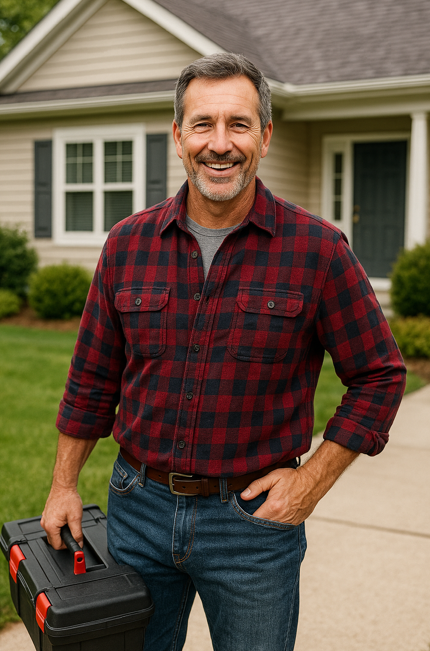💸 What’s the Average Installation Cost for a 3 Ton AC?
Typically, installing a new 3-ton central air conditioner in the U.S. costs between $3,500 and $7,500. This range depends on multiple factors such as labor rates, complexity of installation, and any needed upgrades.
According to HomeAdvisor, average labor costs for AC installation vary widely by region, so expect some geographic differences.
Here’s an approximate cost breakdown:
| Cost Component | Estimated Range |
|---|---|
| Equipment (3 Ton R-32 system) | $1,800 – $3,500 |
| Labor (installation) | $1,200 – $3,000 |
| Ductwork repairs/upgrades | $500 – $2,000 |
| Electrical upgrades | $300 – $1,000 |
| Permits & inspections | $100 – $300 |
🔍 Factors That Affect Installation Costs
1. Equipment Efficiency and Features
High-efficiency R-32 systems — like those in our 3 Ton R-32 collection — generally cost more upfront but lower your electricity bills.
The ENERGY STAR® program offers resources to help you compare efficiencies and see available rebates for qualifying equipment.
2. Installation Complexity
If you’re swapping out an old unit for a similar one, costs stay moderate. But if you need to repair or upgrade ductwork, install a new condenser pad, or upgrade your electrical panel, expect higher expenses.
3. Home Layout and Size
Large or multi-level homes often require ductwork modifications or zoning systems, increasing installation time and costs.
4. Location and Labor Rates
Labor and permit fees vary by city and state. Urban areas tend to have higher labor costs than rural ones.
5. Permitting and Inspections
Most municipalities require permits to install HVAC equipment, which ensures code compliance and safety.
Learn more about permit requirements and inspection processes at This Old House, a great resource for homeowners.
🛠️ Step-by-Step Installation Process and Costs
Step 1: Pre-Installation Assessment
A technician inspects your home’s existing system, ductwork, and electrical setup to identify needed upgrades and ensure correct system sizing.
-
Cost: $75–$150 (sometimes free with installation)
Step 2: Removing the Old AC System
The technician will recover refrigerant properly (per EPA rules), disconnect and haul away the old condenser and air handler.
-
Disposal costs vary; sometimes included in installation.
Step 3: Installing the New System
-
Setting condenser on a level pad outside
-
Connecting refrigerant lines and electrical wiring
-
Repairing or modifying ductwork if necessary
-
Setting up condensate drainage
Labor typically costs between $1,000 and $2,500 depending on complexity.
Step 4: Electrical Work
A dedicated circuit and breaker are necessary for your 3 ton system.
-
May include installing a disconnect box and upgrading panels if needed.
-
Costs generally range from $300 to $1,000.
For guidance on electrical requirements, the U.S. Department of Energy’s energy saver guide is a reliable reference.
Step 5: Testing and System Start-Up
The installer checks for refrigerant leaks, airflow balance, electrical connections, and thermostat calibration.
-
Usually included in installation labor.
🔄 Why Professional Installation Matters
DIY installation can seem tempting, but it’s a risky gamble. Poor installation can cause:
-
Up to 30% loss in system efficiency
-
Premature equipment failure
-
Voided manufacturer warranties
-
Potential safety hazards
The EPA Section 608 certification mandates that only trained professionals handle refrigerants.
🔨 Ductwork and Electrical Upgrades
Ductwork
Leaky or undersized ducts reduce efficiency and comfort. Common duct repairs include sealing, resizing, and insulating.
Costs for ductwork range from $1,000 to $2,500.
Electrical
Your system requires a properly sized dedicated circuit with a correctly rated breaker, usually 30–40 amps for a 3-ton unit.
If your electrical panel lacks space or capacity, an upgrade might be necessary, adding to costs.
🏛️ Permits and Inspections
Permits ensure your installation meets safety and building codes.
Skipping permits risks:
-
Voided insurance
-
Fines
-
Unsafe conditions
Check your local building department for permit requirements.
🧾 Financing and Rebates
To offset upfront costs, consider:
-
Financing plans offered by HVAC contractors
-
Home equity lines of credit (HELOCs)
-
Government and utility rebates for high-efficiency systems
The Database of State Incentives for Renewables & Efficiency (DSIRE) is an excellent tool to find rebates and incentives in your area.
💡 Tips to Manage Installation Costs
-
Get multiple quotes from licensed contractors.
-
Understand what each bid includes.
-
Schedule installation in off-peak seasons.
-
Only upgrade ducts or electrical panels if absolutely necessary.
🔎 After Installation: What to Expect
A professional install means:
-
Efficient, reliable cooling
-
Reduced energy bills
-
Quiet operation
-
Manufacturer warranty protection
Maintain your system with annual tune-ups to keep it running smoothly.
💬 Final Thoughts from Mike
A 3-ton R-32 air conditioner is an excellent investment in home comfort and energy savings. But getting your system installed correctly is just as important as picking the right unit.
Professional installation ensures efficiency, safety, and peace of mind.
For quality equipment and trusted advice, explore our full selection here: 3 Ton R-32 Air Conditioners.







